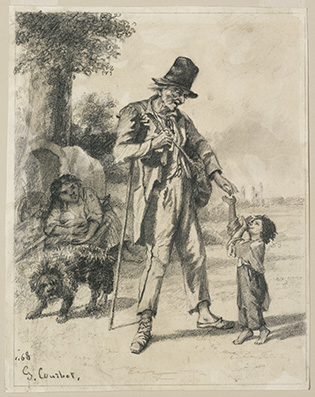
Home |
||
|---|---|---|
Before the exhibitions |
Eight Impressionism exhibitions |
After the exhibitions |
|
||
Gustave Courbet
Jean Désiré Gustave Courbet
* 10. June 1819 in Ornans / Besançon;
† 31. December 1877 in La-Tour-de-Peilz/Schweiz
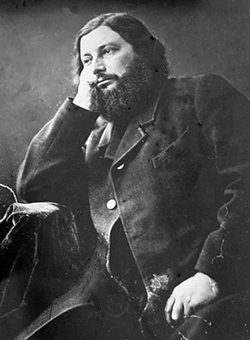
Photo by Nadar ca. 1860
After finishing school in Besançon, Courbet came to Paris to study law, as his father wished. However, this did not materialise, as Courbet devoted himself to painting. In order to learn, he mainly copied works by Dutch painters in the Louvre. He also soon became at home in the painting academies. After a brief phase of romanticising painting, he produced one of his early masterpieces, "Self-Portrait with Black Dog", which was well received at the Salon in Paris.
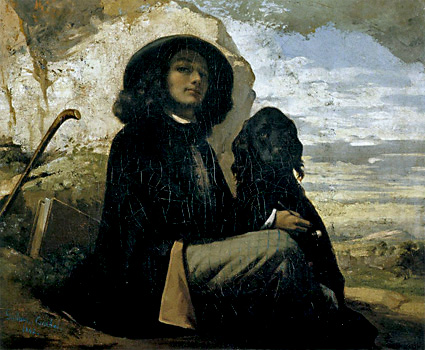
Courbet au chien noir
1842/44 - 46 x 55 cm - Oil on canvas
Musée du Petit Palais, Paris >
Courbet's ability to observe with precision, his love of detail and the expressiveness and plasticity of his figures are revealed here for the first time. Although he also displayed these qualities in other portraits, he was denied access to the Salon until 1849.
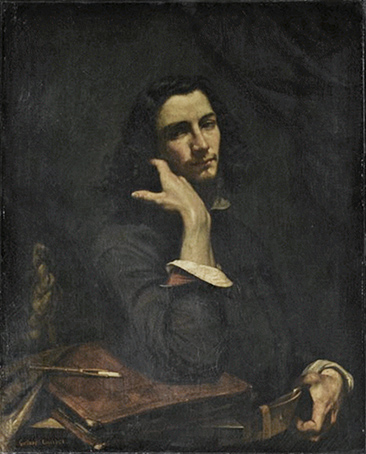
L'homme à la ceinture de cuir. Portrait de l'artiste
ca. 1845/46 - 105 x 81 cm - Oil on canvas
Musée d'Orsay, Paris >
This was followed by an exuberant production of paintings, which met with little favour with the public. In 1847, he undertook his first trip abroad, which took him to Holland. He had never travelled to southern countries such as Spain or Italy. The 'Nordic gravity' attracted him more.
It was not until 1849, after the February Revolution and the abolition of the selection committee, that Courbet was able to exhibit at the Salon again. He showed the painting 'Afternoon in Ornans', which represented a clear contrast to academic tradition: Courbet is sitting at a table with his father and two childhood friends, but everyone is busy with themselves and something else. The painting was awarded a gold medal. It was met with incomprehension by the public.
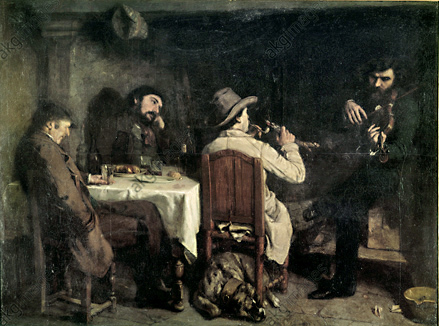
Un Après-dînée à Ornans
1848/49 - 195 x 257 cm - Oil on canvas
Lille, Musée des Beaux-Arts >
In 1850, he exhibited in the Salon again and presented a painting almost seven metres wide: 'Funeral in Ornans'. A mourning congregation in Courbet's home town is depicted in a very profane manner. Starting with the affected family and the rehearsed gestures of the clergy, it leads to the curiosity of the peasants present.
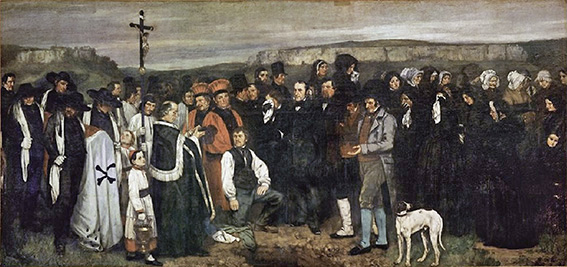
Un enterrement à Ornans
1849/50 - 315 x 668 cm - Oil on canvas
Musée d'Orsay, Paris >
However, this painting was rejected by the jury for the Paris World Exhibition in 1855, along with another monumental work: 'The Artist's Studio'. He therefore built his own exhibition space, the 'Pavillon du Realisme'.
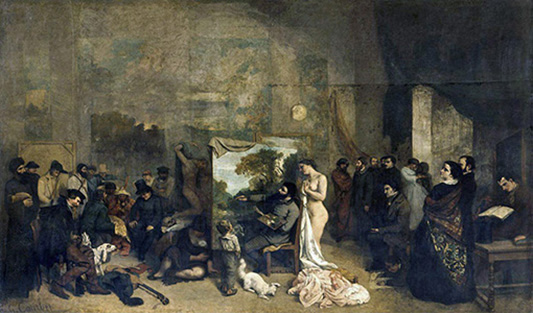
L'Atelier du peintre
1855 - 361 x 598 cm - Oil on canvas
Musée d'Orsay, Paris >
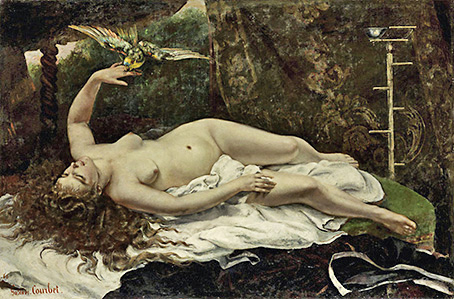
La Femme au perroquet
1868 - 129 x 195 cm - Oil on canvas
Metropolitan Museum of Art, New York >
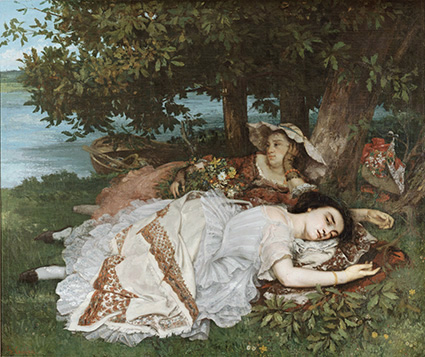
Les demoiselles des bords de la Seine
1857 - 174 x 206 cm - Oil on canvas
Musée du Petit Palais, Paris >
Academy painting was still orientated towards classicism (ca. 1750-1840). The most important criteria were lines, perspective and studio lighting. Almost only historical and mythological subjects were painted in large formats that depicted dignified ideals. The 'Salon', which took place every two years, was extremely important for artists' professional advancement. For a long time, a jury ensured that only artists who conformed to the prevailing art convention were admitted. Courbet was unable to conform to this with his artistic views. He became one of the first and leading representatives of the new 'realism'.
Nevertheless, it should be noted that Courbet is usually mentioned in connection with the artists who are summarised under the term Barbizon, and he is often compared with Corot. However, it must be said that Courbet was anything but an innovator in painting like the others. He was firmly rooted in traditional painting.A longer trip to the south of France led him to change his colour palette under the impression of the southern atmosphere. He increasingly abandoned the heavy, dark colours in favour of lighter, clearer tones. He painted more landscapes and tried to create a natural environment for depicting animals. He focussed on the sea in several paintings. He also painted more nudes. The success that eluded him in France was reaped abroad: a room was dedicated to him in Munich's Glaspalast, among others.
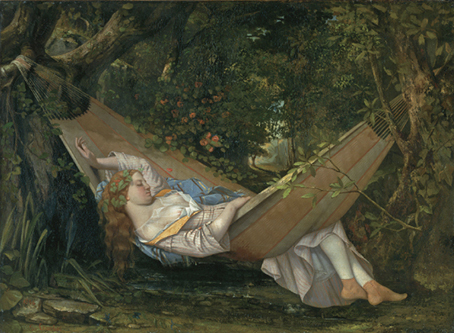
Le Rêve
1844 - 70 x 97 cm - Oil on canvas
Collection Reinhart «Am Römerholz» Winterthur >
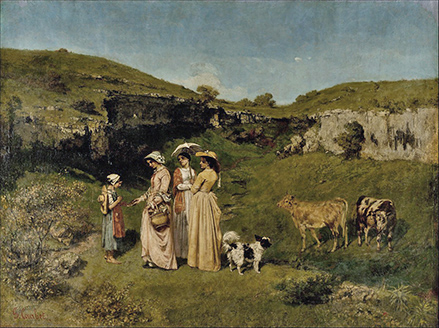
Les demoiselles de village
1851/52 - 195 x 261 cm - Oil on canvas
Metropolitan Museum of Art, New York >
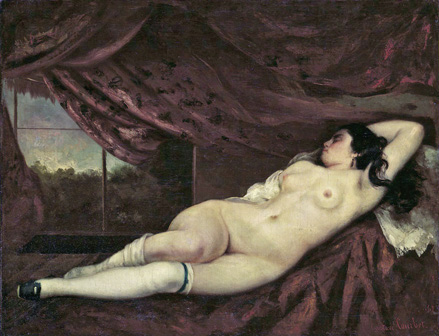
Femme nue couchée
1862 - 75 x 97 cm - Oil on canvas
Privatsammlung
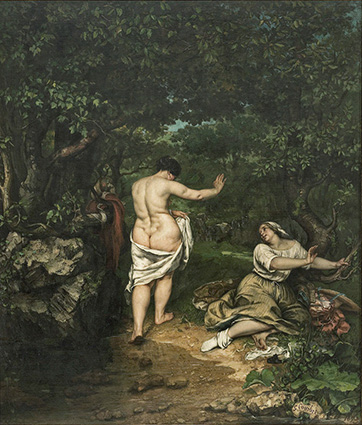
Les Baigneuses
1853 - 227 x 193 cm - Oil on canvas
Musée Fabre, Montpellier >
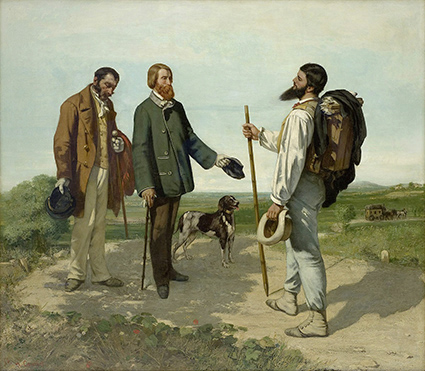
Bonjour, Monsieur Courbet oder La Rencontre
1854 - 132 x 150 cm - Oil on canvas
Musée Fabre, Montpellier >
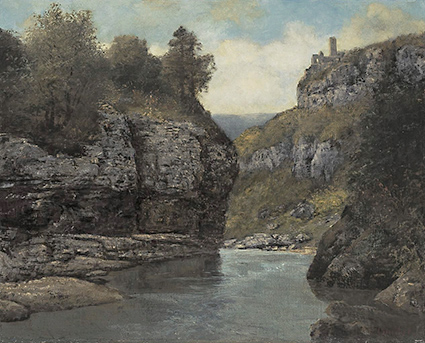
Rochers près de la grotte de la Loue
ca. 1872 - 66 x 82 cm - Oil on canvas
Bayerische Staatsgemäldesammlungen - Neue Pinakothek München >
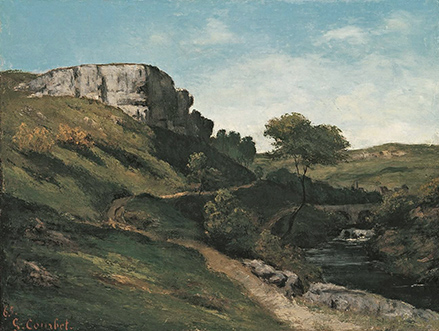
Paysage à Maizières
1865 - 50 x 65 cm - Oil on canvas
Neue Pinakothek, München >
This traditional approach to painting stands in stark contrast to his political commitment, which ultimately cost him his fortune and landed him in prison. His political commitment later prompted the representatives of 'Socialist Realism' to categorise him as their forerunner.
Switzerland became his last home in 1873. It was an escape for political and financial reasons. He now produced still lifes, nudes and landscapes, but his last years had exhausted him. His early death went unrecognised in France.
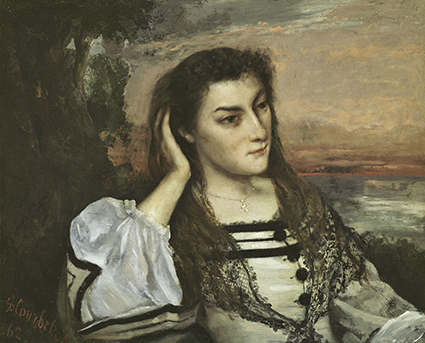
Rêverie (Portrait de Gabrielle Borreau)
1862 - 64 x 77 cm - Oil on paper mounted on canvas
Art Institute Chicago >
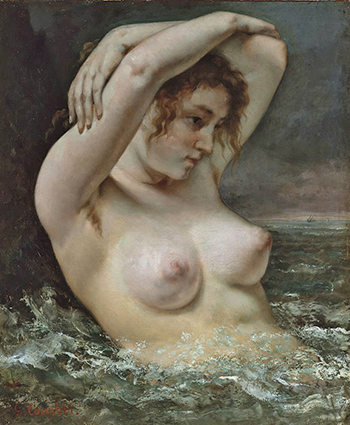
La femme dans les vagues
1868 - 65 x 54 cm - Oil on canvas
Metropolitan Museum of Art, New York >
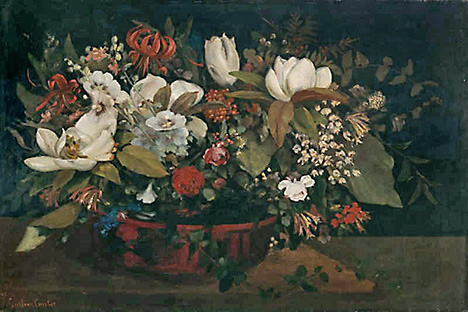
Panier de fleurs
1863 - 72 x 107 cm - Oil on canvas
Kunsthalle Bremen >
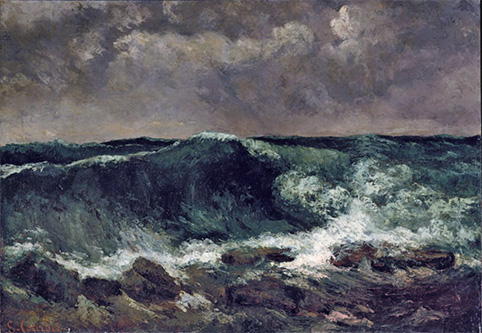
La vague
1869 - 66 x 92 cm - Oil on canvas
Städel Museum Frankfurt >
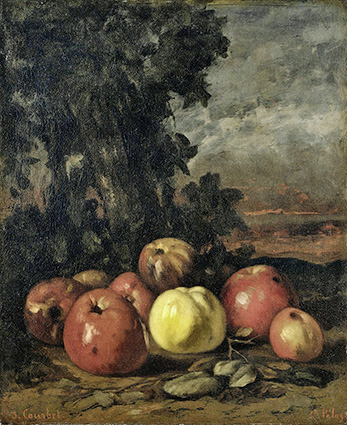
Nature morte avec des pommes
1871/72 - 59 x 48 cm - Oil on canvas
Rijksmuseum, Amsterdam >
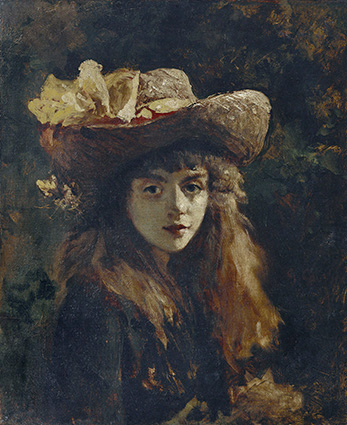
Portrait d'une fille
ca. 1871 - 73 x 60 cm - Oil on canvas
Belvedere, Wien >
Graphic work:
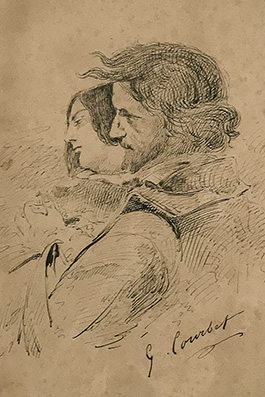
Aumône d'un mendiant à Ornans
1848/49 - 28,7 x 22,1 cm - Graphite with chalk strokes on cream-coloured paper
The Clark Art Institute
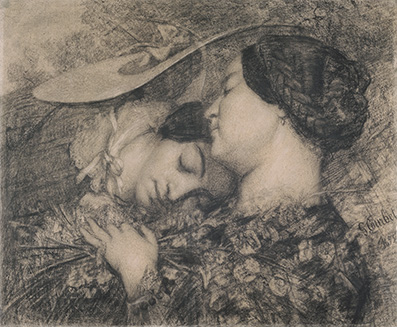
Femmes dans les blés
1855 - 46 × 56 cm - Charcoal, white chalk on paper
Musée des Beaux-Arts de Lyon
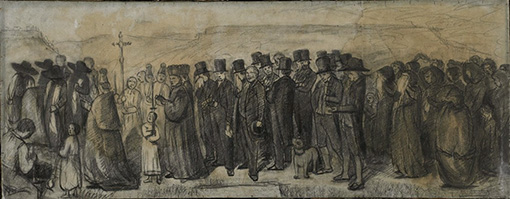
Un enterrement à Ornanss
1849 - 95 x 37 cm - Charcoal on bluish paper
Collections des musées de France (Joconde)
******
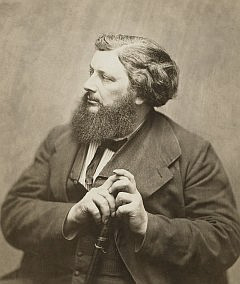
Photo by Nadar - 1861
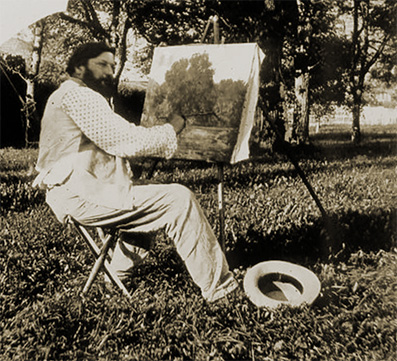
Photo by Jacques-Eugène Feyen - 1864
Ingres / Delacroix |
Gustave Courbet |
|
|---|---|---|
Imprint |
